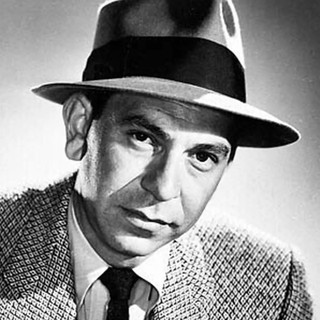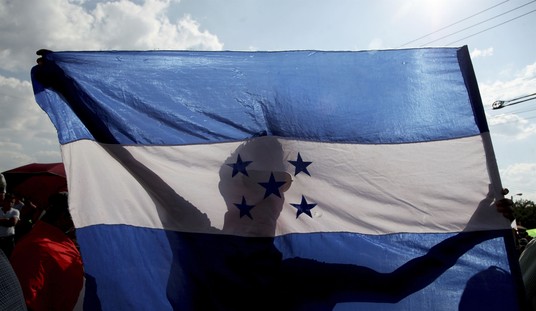I have written elsewhere of my skepticism regarding the murder charge against former Minneapolis police officer Derek Chauvin in the death of George Floyd. I have been equally skeptical of the charges against the three other now-former officers, Tou Thao, Thomas Lane, and Alex Kueng, who are accused of aiding and abetting Chauvin. Nothing in the body camera footage leaked to the Daily Mail on Monday has relieved me of that skepticism. I am now even more doubtful that an impartial trier of fact, assuming one can be found, will convict any of the defendants of the charges against them.
It is sometimes my duty to review videos captured at the scene of a killing. Often as I watch them, I’m struck by how unremarkable things can seem in the very moments before a man pulls a gun or a knife and uses it to kill someone he may have been calmly engaged with only moments earlier. I might watch such a video dozens of times looking for details of the crime, but even so, I’m never entirely free from the irrational hope that the next time I view it, different choices will be made and the victim will walk away unharmed. At so many different points in these videos, I can imagine the victim or the suspect avoiding the moment that would end one life and forever change the other.
So it is with the George Floyd body camera footage, which depicts what was at first a routine police response to a routine minor crime, a scenario that gave no hint at what was to come. But when we watch these videos now, we of course know George Floyd ends up dead, so we search for the pivotal moments that led to the unfortunate outcome. Whose decisions can we point to and say, but for this, George Floyd would be alive today?
This surely will not sit well with those who have elevated Floyd onto the martyr’s pedestal, but nearly all of these fateful decisions were made by Floyd himself. It was he who passed the counterfeit bill that prompted the police response, it was he who resisted the officers’ efforts to arrest him, and it was he who had used the drugs that may have affected a heart already weakened by disease. As to the fateful decisions made by the officers, even these fall short of anything than be described as a crime, least of all murder.
And yet, here we are, with whole sections of Minneapolis and other cities looted and burned, and with rioting even now continuing nightly in Portland and sporadically elsewhere, all in the name of George Floyd. So what to make of these videos, copies of which were surreptitiously recorded and leaked to the Daily Mail?
Will We See Another Kent State Incident?
First, let’s look at the secrecy surrounding the videos themselves. In my National Review Online column linked above, I questioned why the body camera footage had not been made public. “Could it be,” I wrote, “that it has been withheld because it does not bolster the case against the defendants?” Today, it seems even safer to speculate that this is the case.
Though the world had seen those portions of Floyd’s encounter with the police that were captured on nearby security cameras and bystanders’ cellphones, the officers’ body camera videos had remained hidden from public view and under the control of Judge Thomas Cahill, in whose Hennepin County courtroom the case will be heard. But last month Judge Cahill gave members of the media access to view the tapes, thus allowing them to frame their reporting so as to conform with the well-established narrative, which is that Floyd was murdered in cold blood by a racist white cop, aided and abetted by his three equally cold-blooded if less culpable colleagues.
CNN’s July 15 report on the tapes was typical of the genre. “New police body camera footage,” says the headline on the CNN website, “reveals George Floyd’s last words were ‘I can’t breathe.’”
As indeed they were. But the story, by CNN reporter Omar Jimenez, gives only passing notice to how many times Floyd had made a similar claim, beginning with the officers’ first attempt to put him in the backseat of a police car, at which time he very plainly was breathing. At a muscular 6-4 and 223 pounds, Floyd was not one to be easily overpowered. And Jimenez’s report mentioned nothing about Floyd’s histrionics from the moment Officer Lane contacted him as he and two others sat in a parked car. Jimenez seemed troubled that Lane pointed a gun at Floyd, but he failed to mention why the officer did so. “Within 36 seconds after speaking with a store employee [who had called the police],” writes Jimenez, “the officers are at the door of the car Floyd was in and, after an initial knock with a flashlight, Lane points a gun at Floyd and yells, ‘Put your f**king hands up right now!’ Floyd pleads with the officers while sobbing, at one point putting his head on the steering wheel.”
But the body camera footage presents a more complicated picture, doesn’t it? In Lane’s video, we can see that Floyd shows the officer his left hand, but not his right, a glaring danger sign to any police officer. Rare indeed is the cop who will not point his gun at someone under these circumstances. When Floyd, after some persuasion, finally shows his right hand, Lane holsters his weapon and speaks to Floyd tersely but calmly.
Also rare indeed is the police officer who, while patrolling neighborhoods like the one in the Floyd case, hasn’t dealt with a suspect who, like Floyd, turns on what some of us in the trade call the “woo-woo-woo,” i.e., an inordinate level of emotion when suddenly faced with the prospect of being arrested. “Please don’t shoot me, man,” says Floyd, “I just lost my mom, man.”
Drawing the Line in Portland
Floyd’s claim about his mother, like his later denial that he had used drugs, like the mewling that accompanied both, was less than genuine: his mother had died two years earlier.
And the drama continued as Floyd was walked over to a police car, where he refused to get in the backseat when directed to do so. “I am claustrophobic for real,” he says, though one might question why he found the idea of sitting in the backseat of the police car so much more upsetting than sitting in the front seat of his own.
The officers offered to make allowances for Floyd’s claim of claustrophobia, promising to lower the window once he was seated in the car. He still refused, and as is clear in the videos, he strenuously resisted their efforts to put him in the car.
When the bystander video was broadcast on television and shared endlessly on social media, the widespread and continuing assumption was that Chauvin, whose knee was on Floyd’s neck, had constricted Floyd’s breathing and caused his death. But the report on Floyd’s autopsy, as reflected in the section reproduced below, refutes this.

The autopsy also notes Floyd’s hypertensive condition and “severe” arteriosclerotic heart disease, and the presence of both fentanyl and methamphetamine in his blood. Either of these drugs can cause arrhythmias even in an otherwise healthy person, and when this case is heard in court the defense will surely produce medical experts who will testify that Floyd’s heart conditions, drug use, and resistance to being placed in the police car combined to put the fatal strain on his heart.
Few would argue that the force used on Floyd was unreasonable from the start. He was lawfully arrested and resisted the officers’ efforts to place him in a police car. The officers were authorized to use reasonable force to overcome this resistance. The criminal charges in this case stem from the officers’ inability to divine when Floyd’s feigned distress, including the earlier claims he could not breathe, became real. Even if they had realized Floyd had suffered a heart attack and begun CPR immediately, there will be a divergence of medical opinions as to whether Floyd could have survived.
So, the question for the judge or jury will be: Did Floyd die because the officers applied unlawful force, or was it because he, with a diseased heart and after consuming dangerous drugs, so vigorously resisted their use of lawful force? The current state of the evidence provides no clear answer, which translates to reasonable doubt and an acquittal.
I wouldn’t be eager to rebuild any burned businesses in Minneapolis. More trouble lies ahead.










Join the conversation as a VIP Member